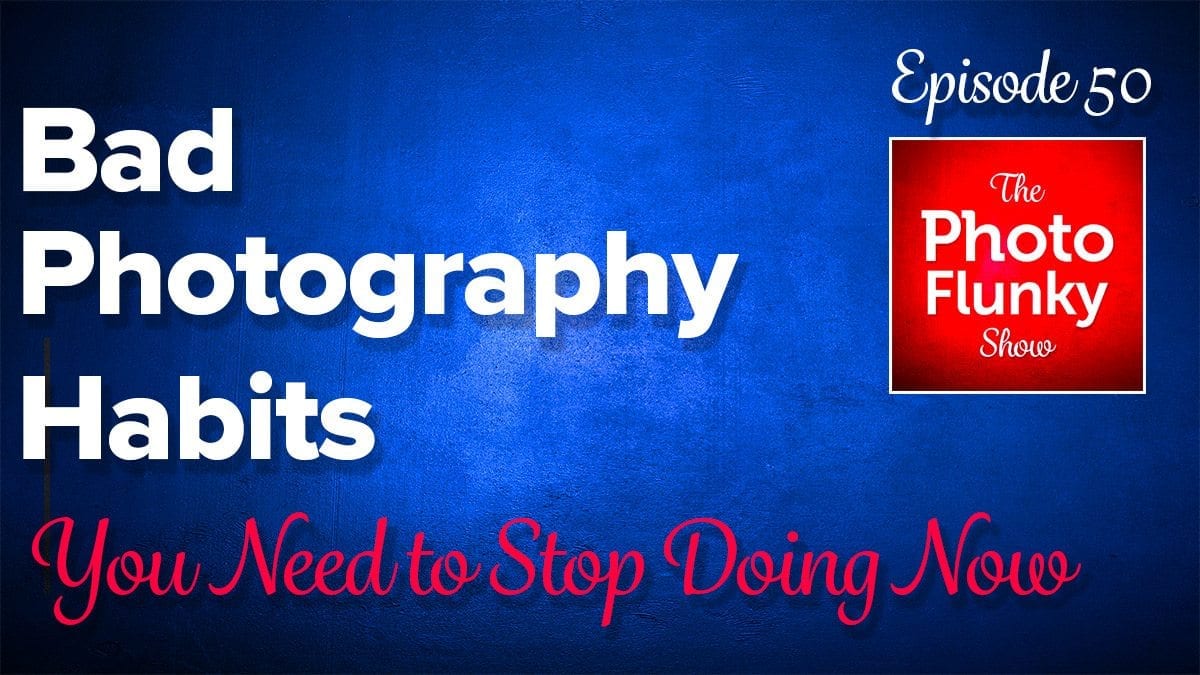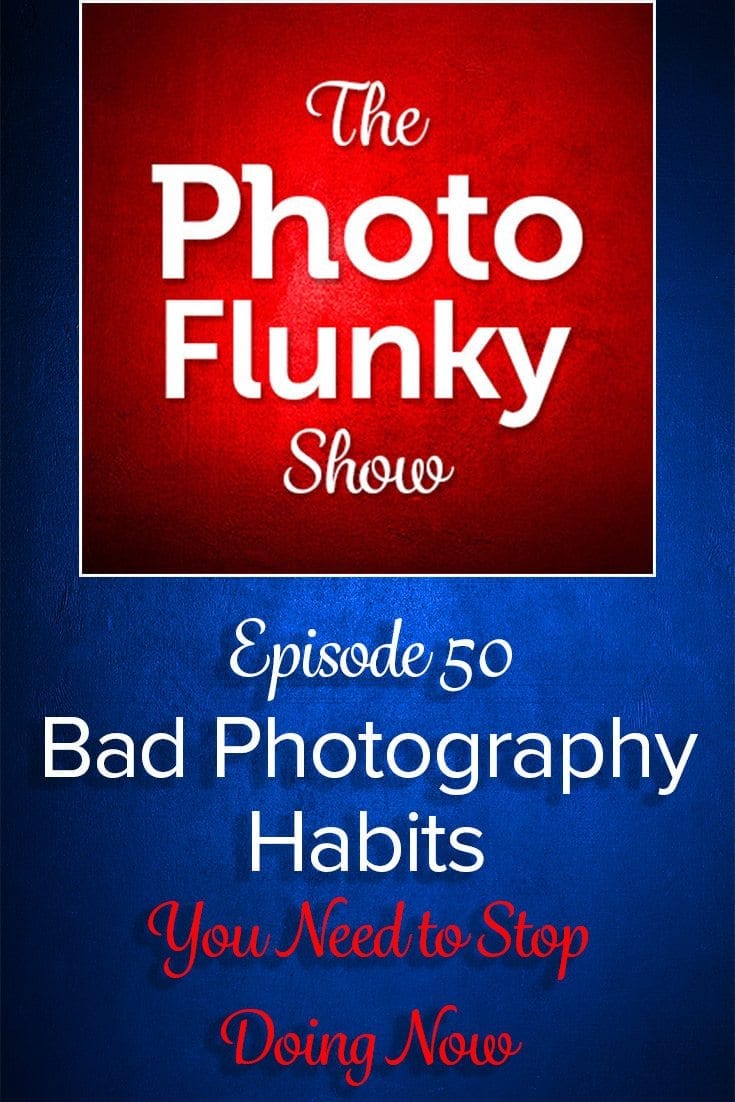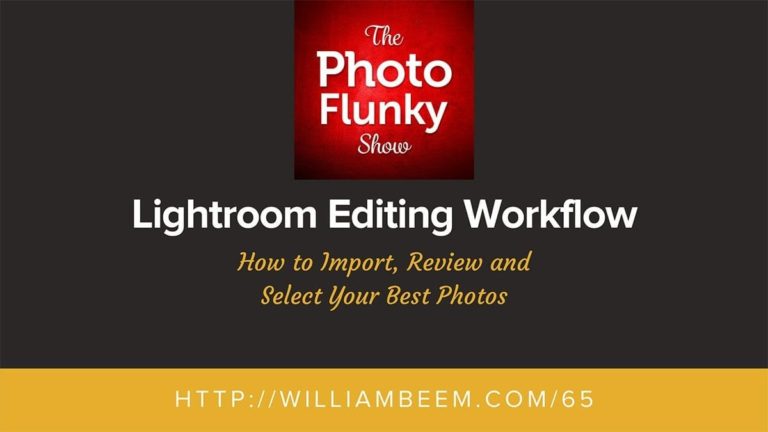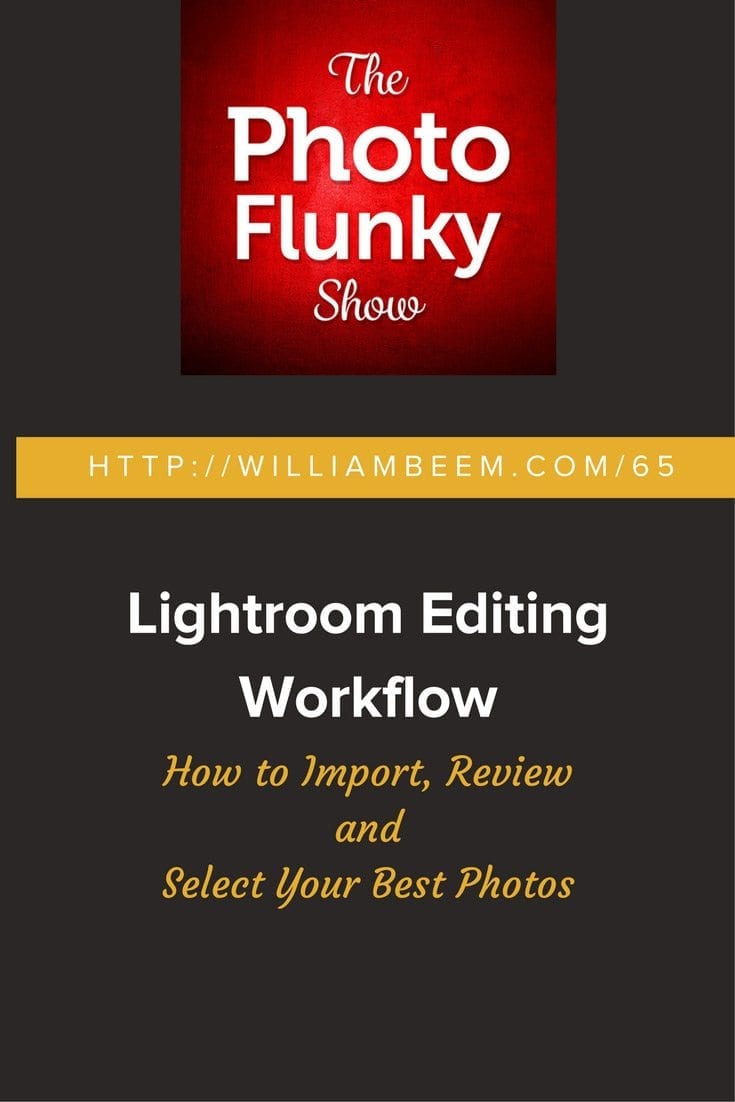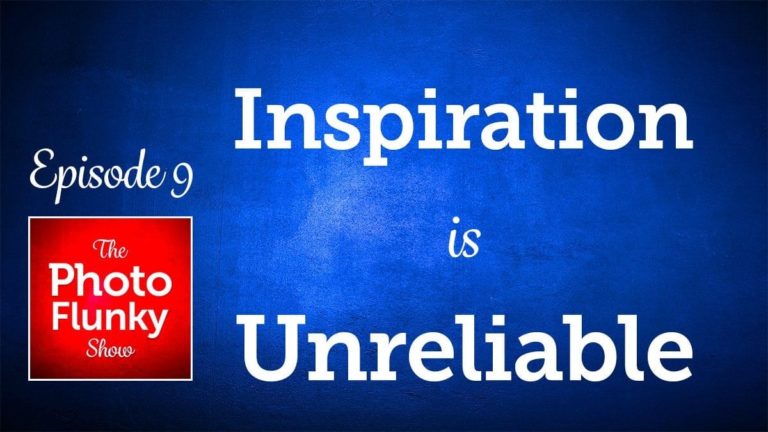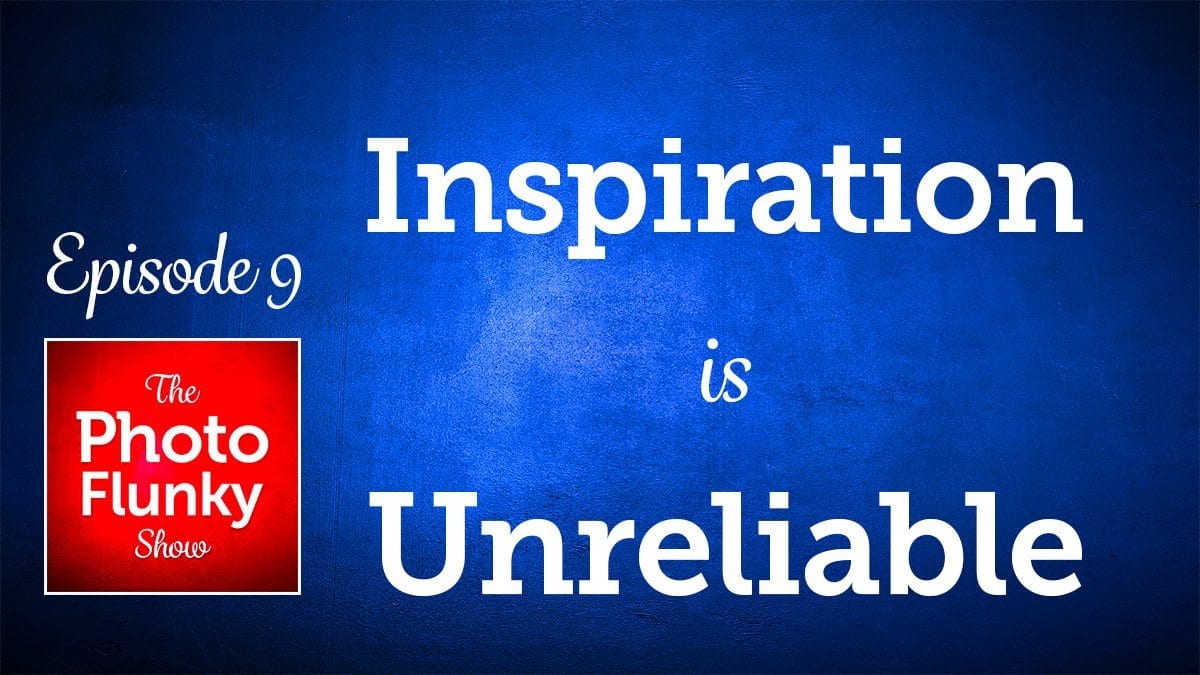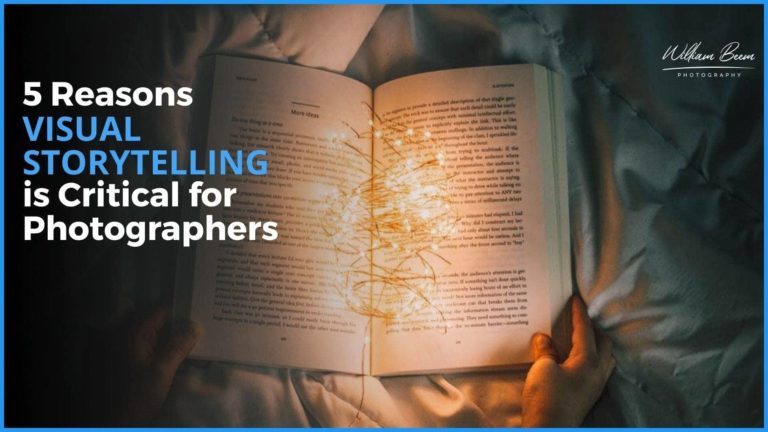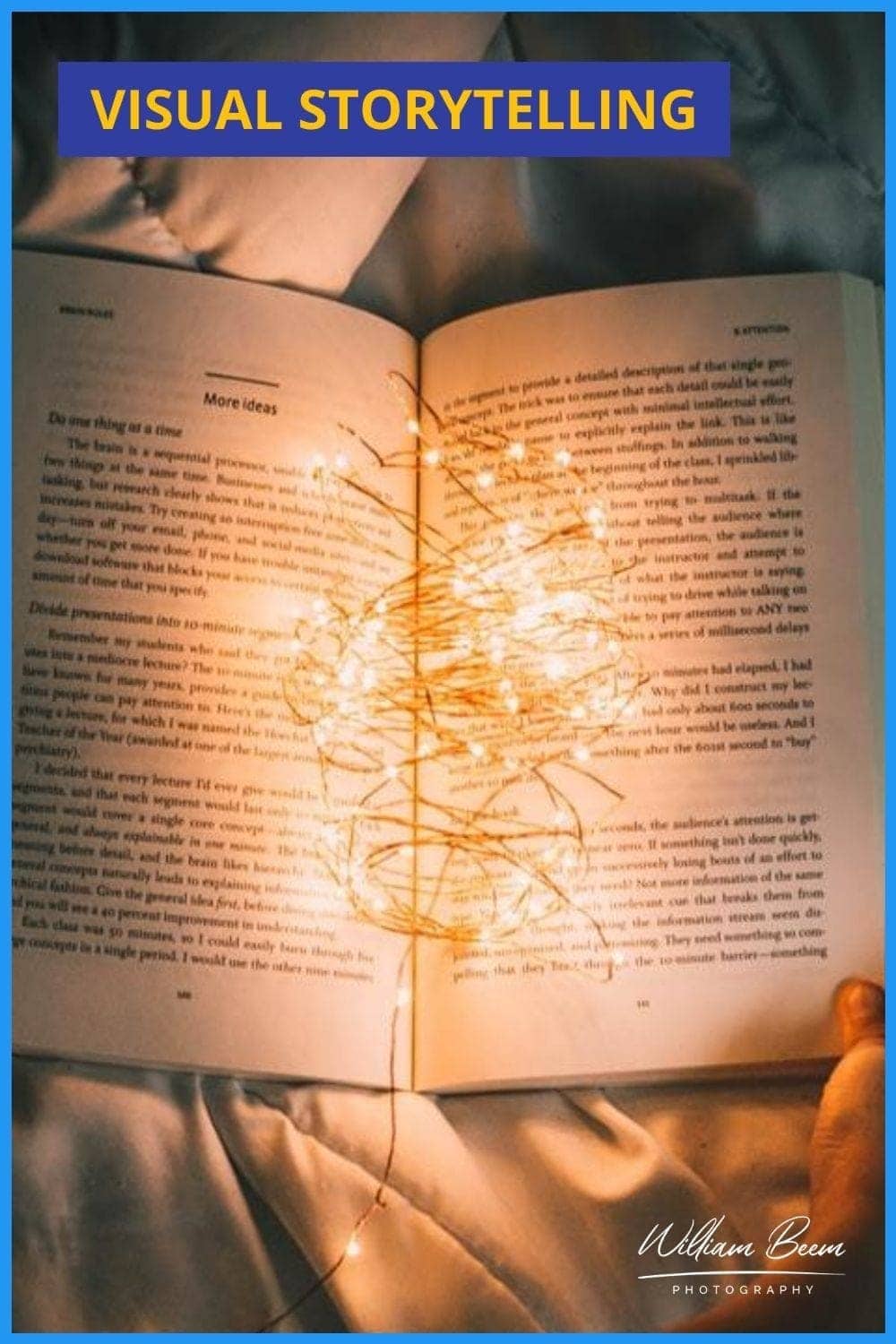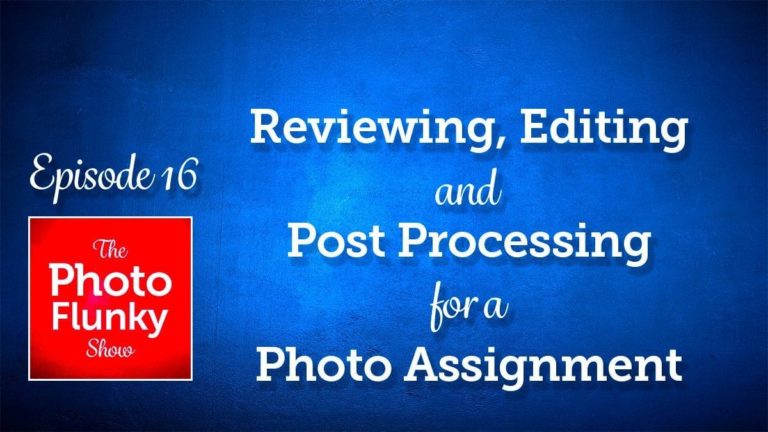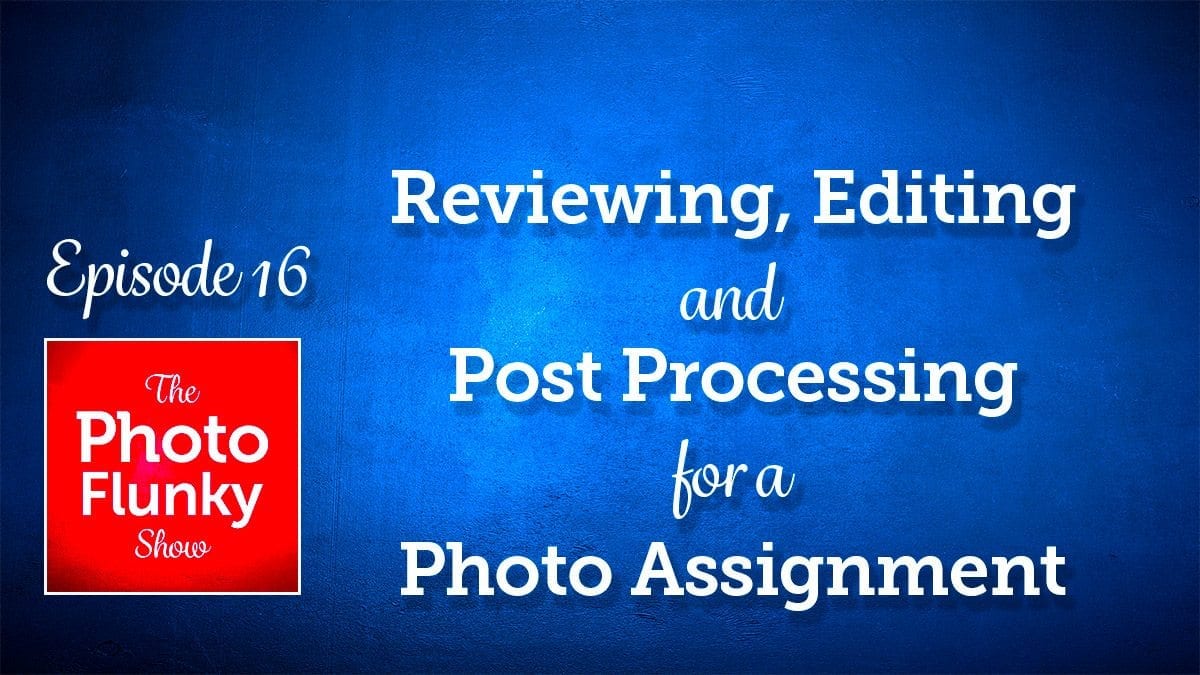Affiliate Disclosure: We earn a commission if you purchase through one of our links at no additional cost to you.
Bad Photography Habits Lead to Bad Photos
Thank you for listening to The Photo Flunky Show, episode 50. We really appreciate you helping us reach this first milestone.
Bad photography habits come in many forms. They can be mental blocks, composition issues, or even post processing errors. We’ll discuss nearly a dozen common bad photography habits and how you can correct them.
We also offer some ideas to tweak your creativity to get out of those habits. Many times, we get into bad photography habits because we’re concentrating a bit too much – overthinking our photography.
So we recommended a few exercises to break you out of your comfort zone and let you concentrate on something else that changes your photography process.
Tell Us What You Want to Fix
This isn’t a complete list of bad photography habits. Let us know some of the issues you’re fighting to fix in the comments below. We can help each other to get rid of our bad habits.
Subscribe to The Photo Flunky Show
Thank you for listening to The Photo Flunky Show. Make sure you get every episode by subscribing.
iTunes – https://williambeem.com/itunes
Stitcher – https://williambeem.com/stitcher
Google Play – https://williambeem.com/googleplay
Blubrry – https://williambeem.com/blubrry
Social Media Links
We love seeing your photos and keeping in touch with you on social media. Here’s where you can find us.
Transcript
THE PHOTO FLUNKY SHOW: Episode 50
Links to subscribe to the show:
You can find links to this episode and all of the other ones at photoflunky.com
iTunes: williambeem.com/itunes
Google Play Music: williambeem.com/googleplay
Stitcher Radio: williambeem.com/stitcher
Blubrry: williambeem.com/blubrry
Keep up with us on social media:
Twitter: @photoflunky
Facebook: William Beem Photography
You can find links to this episode and all of the other ones at photoflunky.com and of course if you’d like to subscribe, we would love that. Go to at williambeem.com/itunes or williambeem.com/googleplay or williambeem.com/stitcher or even williambeem.com/blubrry
Hey, welcome to the Photo Flunky Show, Episode number fifty.
Today we are going to be talking about bad photography habits. I’ve got a long list. This was easy to think of things. It’s not a comprehensive list, but it’s a place to start.
Thank you for joining us on episode fifty of the Photo Flunky Show. My name is William Beem and I’m just really happy that everybody is listening and we have had a chance to get up to fifty episodes.
I’ve got some nice feedback from people and I just want to say thank you very much! I’m enjoying this and we are going to keep on doing this.
As far as our topic for today, I’ll get to that in just a moment, but I just want to say show notes are going to be available at williambeem.com/episode50. And of course you can get a free transcript there.
You can find links to subscribe to the show at photoflunky.com. Honestly, if you get the transcript, the links are inside the transcript.
Lee: Yes. All put there especially for you. Oh and by the way, I’m Lee. William didn’t want to give me a chance to say hello!
William: I’m a bad person! I was wondering why you didn’t say hello.
Lee: You didn’t give me a chance. You said who you are and went straight into speaking. Hopefully most people know me now.
William: You never know. This could be someone’s first show and you just made it sound like I’m screwing the whole thing up.
Lee: No, it’s just because I’m the only one with an accent, remember?
William: Oh that’s true. Tové thinks I have a “proper American accent.” But then lately it’s been that I have a strong American accent!
Lee: Now it’s not strong anymore. She’s got used to it.
William: Is it the heavy American accent?
Lee: No she’s got used to it and now it’s just regular.
William: I liked it better when I was proper.
Lee: You’ve been downgraded from proper.
William: Well there you go. One last thing we want to bring up is please, we would love to see you on social media. You can follow us on Facebook Twitter …. I am @wbeem on Twitter. Of course the show is @photoflunky and if you are looking for me on Instagram or Pinterest, on Instagram I’m wbeem and on Pinterest I am williambeem. There are links to these on the blog, but we’d love it if you would check us out, share something with us, follow us …
If someone is following me on Twitter, Instagram or Pinterest or anything like that, you see who it is and you go back and say, “Oh what kind of work do they have?”
Lee: Yes!
William: And that’s one of the things I’m really enjoying. So when I’m saying to follow me it’s so I can see what you’ve got.
Lee: Yes I’m the same. If someone follows me I go straight to their profile to go and see if they’ve got something good and a lot of the time I do follow them. I mean some people, you know what Twitter is like!
William: I’m selfish. I want to see what you’re doing!
Lee: Yes. We like to read and follow so let us follow you.
William: Today we are going to be talking about bad photo habits and I have made every mistake that I think a photographer can make and I try not to make them too many times in a row.
We are talking about bad photo habits. Basically these are the things that cause you to miss shots or create ugly photos and we are hoping that you want to stop doing that sort of thing.
The things that we are talking about, some of them are going to be mental habits, some of them are composition habits, some of them are post processing habits. There is just a list and we are going to go down it. Some of the things you have heard of before. Some of them you are not even thinking about. Depending on where you are in your photography.
Let’s start off with one of the most blatant ones that we see a lot, which is shooting at the wrong time of day.
Lee: Yes, we saw that yesterday and I’ve seen it many times going somewhere where it’s almost the time where you’re coming to meet me or pick me up or when I need to be done that the best light is coming in.
William: Yesterday we actually (yesterday depends on when you are listening to this). It was on a Saturday. We went off to Walt Disney World Magic Kingdom because we were having a family day but we were also doing some photographs that we wanted to capture the Christmas spirit; decorations and things going on at the Magic Kingdom.
We got there in the morning and the light was kind of nice.
Lee: It was, for a little while.
William: For a little while. And then I put my camera in my bag and did not pull it out for hours and hours because the light was just horrible.
Lee: You know what was also really funny. We always go on about our daughter, Tové. She is not a photographer at all and sometimes she needs to be very long-suffering with our taking of photos. There was a group of people and I wanted to get a picture taken with them in Main Street USA.
William: I remember that one!
Lee: Yes, you will! So I went up to them and passed my phone to Tové and asked if she would snap a shot of the five of us together and she was only too happy. She kept saying, “You guys need to turn around. You’re facing the wrong way in the light.”
And my brain just dismissed it thinking, what does she know? And I could tell that these people wanted to get moving so I didn’t want to hold them up and told her to just take it; it’s fine. When I looked at it, she was actually right. I realized in the moment while she was taking it that we were facing away from the sun.
William: You were backlit.
Lee: We were backlit. It wasn’t terrible, but she was right.
William: The thing about that time of day – it was probably roughly about 11 am, 11:30 or something like that and so you had high, harsh light in there. But that was the kind of thing where you’re not necessarily shooting for art. You are saying these are some cool people. I just want to get my snapshot with them.
Lee: Yes.
William: I’m a lot more forgiving for something like that and I think a lot of people are, but when you are shooting for real memories, I think if these were people that you knew, like when you had your lifelong friend that you hadn’t seen in decades. Those shots of the two of you together, we wanted to make sure everything was just right.
Lee: Oh, yes we did.
William: We made sure that the light was right, we got everything perfect for it.
A quick snapshot with someone you’ve never met and you’re never going to see again, I don’t worry about that.
Lee: It’s fun. But it’s documentary.
William: Shooting at the wrong time of day … I kind of go back and forth on this because if you have to make a shot then usually you can bring things to make it better. You can bring out a sheet or blanket, but you are not going to take that off to Walt Disney World.
Lee: No, you’re not. There are a lot of places where it just doesn’t make sense.
William: Yes so those are times when you are going out, capturing stuff in the moment. Yes, get a shot if it’s something that you are not going to see the moment come again. But if you’ve got the choice of shooting in the morning, shooting in the evening, those are your better times when you’re going to have a better quality of light. Side light is so much more beautiful. Softer light is so much more beautiful.
Shooting at the wrong time of day just because it’s convenient? Well nobody said photography is going to be convenient.
Lee: It’s usually not.
William: I’ve spent hours waiting for the right time or hours waiting for something to happen; or getting someplace hours before something happens so that I can get something at the right moment.
Lee: And then it rains.
William: And then it rains. But that gave me another shot. Anyways, try to avoid the harsh daylight. If you don’t have something where you can set up or put up a silk or a sheet to diffuse the light and make things work the way you want to, then just get there at the right time and go enjoy yourself or do something else; take a nap or a siesta when it’s high noon.
Lee: Yes. Have a drink first.
William: OK this one comes back to a mistake I made when I got my very first DSLR and I looked down and thought if I shoot in raw mode I only get this many photos; if I shoot in jpg I get hundreds of photos. So I’ll shoot jpg.
You may get hundreds of photos, but honestly you don’t have enough detail in there that you really want to go in there and work with post processing later on.
Lee: Mmm, see I did that at first. I did that for a couple of years. I don’t really regret it in a way, because when I look at the photos I took, yes, I had no intention of trying and didn’t have any editing software at the time. I wasn’t planning to post process them. When I looked back once I did have Lightroom to work with those shots, I’d moved on and they weren’t that great that I wanted to do much with them. But there were snapshots that I wished I could fix.
William: I think this happens to a lot of people where they are going to be snapshots.
I was looking in Lightroom today at some of my older photos and I thought I wish I had shot those in raw back then because I could do something with them today that I didn’t know how to do back then.
I eventually learned and that is why I’m bringing this up as a habit to stop. Start shooting in raw, even if you don’t have post processing today. You will sometime down the road.
Now of course there are going to be exceptions. If you are shooting sports or shooting something fast paced then you don’t need your buffer being filled up with a bunch of raw photos if you know how to nail your exposure. But if you are starting off and you are kind of taking your time and shooting out there, go ahead and shoot raw. Even if you don’t process those raw photos today, you will one day and you’re going to wish that you had more data.
Alright here’s a composition one for you: centering your subjects.
Lee: I generally don’t do it.
William: I think a lot of people do because it’s easy when you start off focusing. The center is right there in the center. I look at photos and there are times when having something dramatically centered looks really good. The rest of the time it just looks like there’s a boat, there’s a person, there’s whatever it is that you’re shooting.
Lee: I think every DSLR lets you move the center anyway.
William: It does. And get used to moving that center around.
Lee: Look, mom! The center is not in the middle!
William: Yeah, put that focus point someplace off to the side, whether you’re going to use the rule of thirds, the golden ratio … start thinking about your composition and just get things out of the center. It will make it much more interesting for people looking at your photos.
Along with that, shooting everything from eye level.
Lee: I’m not too bad with that. I tend to move around quite a lot.
William: That’s why I hurt after I get through with a photo shoot. I do a lot of squats!
Lee: Yeah, it’s good for you.
William: It’s good exercise, but it also makes things look much more appealing.
Lee: That’s why photographers have nice rear ends.
William: I’m not going there!
Alright, let me go back to shooting from eye level!
Episode fifty is going to be one to remember, isn’t it? The thing with shooting from eye level is if you’re shooting children, you are going to be looking down on them all the time. If you are shooting another person, you get a bit more power if you kind of kneel down and shoot up a little bit.
You don’t want to be shooting up their nose and have too much of an angle, but you can kind of make things work. So for example, if we were talking about shooting someone in front of Cinderella’s castle and we are going to use that as our background, you don’t want to be shooting straight at them. Otherwise you’ll be cutting off the top of the castle.
Lee: That’s true, yes.
William: So you want to get down a little bit and you want to shoot up. It makes them look more powerful, stronger in your image and it also helps your background. Just move around. Get high, get low, just do something besides eye level all the time.
OK do you want to take the next one?
Lee: Ignoring your background!
William: Don’t you hate it when you see a photo that should be nice, but the background is so distracting that you can’t really enjoy the subject?
Lee: Yes, you can’t do anything. I tell you one worse. I took a nice photo at the Epcot Food and Wine Festival on opening day. I sniped a shot of an elderly couple enjoying their little samples that they had got to taste. Out of respect to them, because I didn’t want to disturb them or ask them (they probably would have been fine with getting a photo taken) but I didn’t take a photo of their faces. I took photos of their hands on the table. They were sharing stuff and passing it across.
I framed the thing and as I snapped the shot, the woman must have had a crumpled up napkin in one of her hands and she flung it across and it ended up right in the center. Everything else was prefect, but the napkin …! It’s not just the background; get rid of the trash!
William: Eliminate distractions, basically. But the thing I hate about backgrounds is you are shooting someone by the ocean or a lake or a body of water and I hate seeing the horizon line going through somebody’s head.
Lee: Yes.
William: If you are shooting someplace and there is a bright light behind them it’s kind of really distracting from the subject. I’ve been in some buildings where people think this is a really cool place to shoot and I’m looking around saying, all I see is a bunch of lines going in and out of my subject’s body.
I think simplicity is your friend. If you can’t remove some of those things, then get a longer focal length and shoot wide open and defocus and blur out that background. Bokeh is your buddy.
Lee: Yes.
William: Here is one that Lee brought up and that is not thinking about how you are going to use the photo. A lot of times we are told to get in tight, fill the frame, but sometimes that can kind of bite you.
Lee: Yes it can and I have a terrible problem; I’ve always been aware of it and no matter how much I try, it is just something I have had to learn to deal with and I have to keep in mind: I lean to the right when I hit the shutter. I tend to lean my camera to the right, which means I always have to straighten and because I like to get in on details, I tend to shoot with quite a tight crop and I never leave myself – or usually forget to leave myself – enough wiggle room. So something always has to give. And a photo that is slightly badly aligned is more distracting than just cropping a piece of it out, but it’s not ideal.
William: Well here’s an example. Let’s say you were taking a photo of a person or even an animal and you’ve got a tilted background or horizon line and you’ve got to change the angle and then after you crop it you realize you’ve just cut off their feet. And then you’ve got an awkward crop right at their ankles. It just doesn’t look right.
Sometimes it helps to give yourself some space. The other thing you want to think about is how you are going to use the photo. So if you are going to put this on Instagram and you’re going to do a square crop, then you need to shoot not as if you have the entire frame to use, but you need to make sure that you are making your composition within the square that you want to use.
Lee: Yes, in other words you want to have enough spare space on the left or right; or if you are in portrait mode, on the top and bottom. You need some spare space. Or if you’ve got your subject on the left or right, you need to have quite a bit of spare space on the other side.
William: One of the things I do quite often for a blog post and social media is I’m shooting with the intention of a 16:9 crop, so I can’t necessarily go in there and fill the frame and then expect it to work on that kind of crop.
Lee: Yeah I learned the hard with that when I first started shooting photos for our other website, Orlando Local, because that is not the typical crop that I used to use. I’m a square crop person and when I came back a lot of my photos saw me really struggle because I hadn’t left room on the top and bottom. I had left it to the sides.
William: So when you go out and shoot, it’s not just thinking about the photo you want to take and say OK I’ve got it. When you want to use it that’s what you really think about as your end. What are you going to do with this photo? Are you composing it in such a way that you can crop it as you need it? Can you change the angle or tilt it around a little bit?
Another one that we brought up is not working the scene with multiple compositions. It’s kind of tempting to take one shot and say, “Looks good to me!”
The problem is, it may look good to you, but it may not be the most interesting photo that you can get of a subject.
Lee: Or it may be interesting, but there might be something even better that you miss.
William: Exactly. So if you’ve got time, walk around, get high, get low. Part of what we talked about not shooting necessarily from eye level but work the scene. Move around. Move to the side. As you move around and your light sources come from the same side, it’s going to change the way your subject reacts, so if you’re shooting a person and they have their face to the light, getting to the side of them can give you a very interesting, dramatic fall-off from one side to the other.
The same thing is true with architecture. You can have a lot of fun, especially with tall buildings, just looking at angles of light, walking around and seeing where the reflections are, where are the places where you’re going to get a gradation or fall-off of light?
So work your scene and don’t just take one photo. See what else you can do with this.
This is one of my favorites. Not using a tripod! And you don’t really like your tripod that much.
Lee: I do like my tripod, it’s not that at all. It’s just I need a tripod more than I use it and I should use it most of the time because I just don’t have a steady hand. And I know that. Hand held HDR for me was just never going to happen!
William: I’ve done hand held HDR in a pinch when I went to places where I couldn’t take a tripod. So when I went to the US Capitol, I could not take a tripod in there. And busy places you can’t take a tripod around and that’s why I shot with a very wide angle lens. There are so many circumstances where a tripod is going to be a buddy to you.
Fireworks are examples. HDR, if you are doing bracketing, if you’re going to do a long exposure or if you’re going to do time lapse, you want to make sure you’ve got a stable platform for that. Another one is portraits and what I like to do is get the model in his or her space, put the camera on the tripod and then I don’t want them looking necessarily at my face hiding behind there. I want them to see me. I want to be able to talk to them and I’ve just got a cable release and I’m clicking and clicking whenever I see something right.
So it’s much easier I think, to get a good shot of a portrait when you are looking at your subject rather than looking through a view finder.
Lee: That is true. You’ve got tunnel vision in a view finder.
William: You already know what your view looks like, you already know where your edges are for top and bottom and side to side. Trust it and go ahead and pay attention to your model. It’s a novel concept.
Lee: Yes. And engage.
William: Alright, here’s another one that you want to get past. It’s an “I’ll fix it in post processing” attitude.
Lee: Yeah, I don’t ever think that. There are times where you look at something and hope you can save this, but honestly, I never take a photo and think I’ll fix it later.
William: I don’t want to take something thinking I have to save it. If I have to save it, to me it’s not a good shot in the first place.
But it’s not necessarily just that. It’s also if there is something in the way of your shot, go and take it out. Eliminate distraction by actually walking over and picking them up. Like you mentioned that napkin. You don’t want to try and say, “Oh I wonder if this clone stamp will work or the healing brush will take care of that.”
Lee: I didn’t even bother. In my mindset, I didn’t get the shot.
William: Yeah, I would rather just say let’s fix the shot and get it as best as I can in camera and then go ahead and post processing should be to finish your photos; not to try and change them.
Another example I want to bring up is not looking at other people’s photos. It’s kind of hard to grow if you don’t see what’s happening in an art community beyond yourself.
Lee: That’s very true. I’ve learned a lot from other people! And another thing is that it’s not necessarily photos from the same genre that I like to operate. It’s not necessarily photos that are to my taste in style, but I’ve still learned a lot from other people.
William: I think what you learn is even if you are not really happy with the subject matter or maybe it’s not your thing, you can still see the creativity that the photographer puts into his or her shot. You can see their use of light, you can see how their composition works, you can see how lines go. All those things build up in your head. So the next time when you go out for a shoot you’ve got something extra in your tool box to put down and use.
Lee: Yes, that’s true.
William: The last thing that I wanted to bring up for a list of bad habits is being too technical instead of being creative. It’s very easy at the beginning to start thinking about the exposure triangle. Which ISO am I using, which aperture is going to give me the right depth of field on a subject? Those aren’t the important issues. You want to come up with your creative idea first and then you can let the technical stuff be the choices that support your creativity.
Lee: I think what happens is that initially you need some understanding of how the technical side works so that you can use it the way you want to use it. The problem is that you start out like that and you’re thinking of these things. You get to a point where it becomes almost automatic in the sense that you do have the understanding, but you have programmed yourself to consciously think about it. And you make that become the most important thing. The most important this is to go and take your shot.
William: Yes and we came up with a few What If scenarios to help you with your creativity and they also help you get away from some of the bad habits, so for example, what if you just use one lens? That takes away a lot of the technical aspects of it. Don’t worry about using this lens or that lens. You over think things trying to decide what gear to use.
Put on a prime lens and go out and shoot.
Lee: And see what you get. Run around.
William: And then maybe the next day put on a different prime lens and go out and go shoot.
Lee: I’ve done that. It was one of my photo challenges.
William: I’m not a big person on photo challenges, but I am big on using these things as creative exercises. I guess that’s what a photo challenge is really supposed to be.
Lee: It was my own thing that I set up for myself. I was sick of getting the same photos and I had a couple of primes and thought, what have I got to lose?
William: I remember a few years ago when I did the trip to Cuba, Joe McNally was the one leading it. We went out for a photo walk and he brought a Nikon DF with a 28mm prime. I thought oh my! Joe is just going to shoot with one focal length? And that was what his stuff was for the day. We were going off to a dance hall. It was kind of like a modern dance place where they were going to do the warm-up and the performance. He did everything with that 28mm lens. And being Joe, he got some great shots. I am sure he also got some that he kind of wished he didn’t get, but it was very nice for me to see someone as experienced as he is; someone working as a high end professional photographer, still going off and saying, “What can I do with just this?”
Lee: I shot an entire live performance with my cheap little nifty fifty. The reason I did that was it was the only fast lens I had. Honestly, I’ve shot that show many times since and I think the photos I took the first time, despite that I knew less, are probably still my favorites.
William: The thing is that we tend to rely upon being able to change our focal length and we zoom in and out and I do that. I’ve got my 24-70 mm – probably my most used lens – but sometimes even if you just use one lens, you might want to take it back to a prime and just go out and shoot with something where you’ve got to move around. It makes you think a bit more about how your composition is going to go.
Another one is what if you shoot the same subject a different way each time?
Now what inspired me with this was a Russian photographer. He’s a businessman. He traveled around the world with his girlfriend and you’ve probably seen this on Instagram. He’s got 4.4 million followers and all of the shots are very much the same. His girlfriend is walking in front of him, her arm back and he is holding her hand and taking the shot. The same kind of thing, but in different places. It captured a lot of people’s imaginations to see him going through the world with her just leading him along. Forget the camera. Come on with me, honey!
Lee: It is nice. It gives you a sense of movement forwards.
William: Yeah, and it was just a wonderful thing to see. That kind of shot in so many different places, different outfits, different styles all the time, but still the same kind of pose, I guess.
So what if you shot the same subject a different way each time? It doesn’t have to be a person. You can shoot an object. You can go find a building in your town or maybe an old tree or something like that and do the same thing. Shoot it at different times of the day. Shoot it at different seasons of the year. Shoot parts of it instead of all of it, but explore what it’s like to shoot the same subject a different way each time.
In other words you don’t just go out there and take a picture of a tree a few times. You’ve got fifty different pictures of the same thing.
Lee: Yes, make it interesting. See it from a different angle.
William: Yes and that helps you the next time you’re going out. Maybe I’ve shot this tree so many times; maybe I can think of a way to shoot my next subject differently.
And finally, this is one that I’ve brought up before, but what if you stopped thinking about being a photographer? What if you stopped looking for a photo and instead, thought about what is the story I’m going to tell?
That’s going to change the way you compose your photos. It’s going to change the moment that you click. It’s going to change maybe how you let the light come in. I don’t know exactly everything that’s going to happen. It depends on what your subject is, but if you want to capture a photo that is going to tell a story in one click, you’ve got to put a lot of thought into it. That thought is really what is going to help you decide how to drop some bad habits and maybe create some new ones.
Did I just say create new bad habits?
Lee: Yes you did.
William: OK. Create good habits that are new; not bad habits!
Oh, is this show over yet?
Thank for listening to the Photo Flunky Show, episode 50. I am glad I didn’t make a big deal out of this little milestone. It hasn’t gone the way I thought it would. But show notes are available at williambeem.com/episode50. You can find a free transcript of the show there. And of course there are going to be links to subscribe to the show on iTunes, Google Play Music and other sites at photoflunky.com
We would love it if you would keep up with us on future blog posts and podcasts by subscribing to our news digest. Just go to williambeem.com
and you’ll see a fun little form there to fill out with your email address and we will send you a little something every week on Sunday.
Thank you so much. We appreciate you and we’ll see you again next week.

